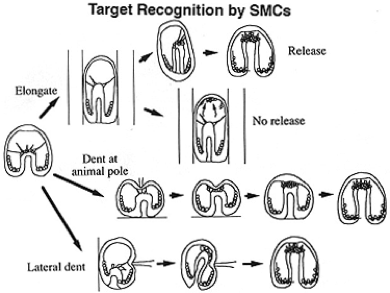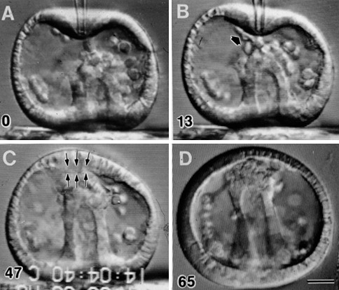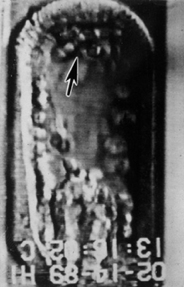
In order to test the idea that secondary mesenchyme cells (SMCs) respond to the animal pole as a specific "target" site, as a postdoctoral fellow I performed several experiments. If the basic "rule" SMCs use is to continue their transient attachment behavior until they strike this target, then we would expect several things. First, allowing them to touch this region earlier than they would normally should cause them to make stable attachments earlier than usual. Second, delaying their contact with this region should delay the dramatic change in their behavior. Fortunately, we can test these ideas by changing the shape of the embryo. In each case, the results support the conclusion that physical contact with the animal pole target region induces the change in their behavior. The images below show pictures of actual embryos on which these experiments have been performed.

We can allow SMCs to touch the
animal pole region earlier than they would normally by
denting down the animal pole ectoderm. When this is done,
in some cases the SMCs rapidly cease their exploratory
behavior an make stable attachments to the animal pole,
resulting in an abnormally short archenteron (C), whose
attachment persists even after the dent is removed (D).
